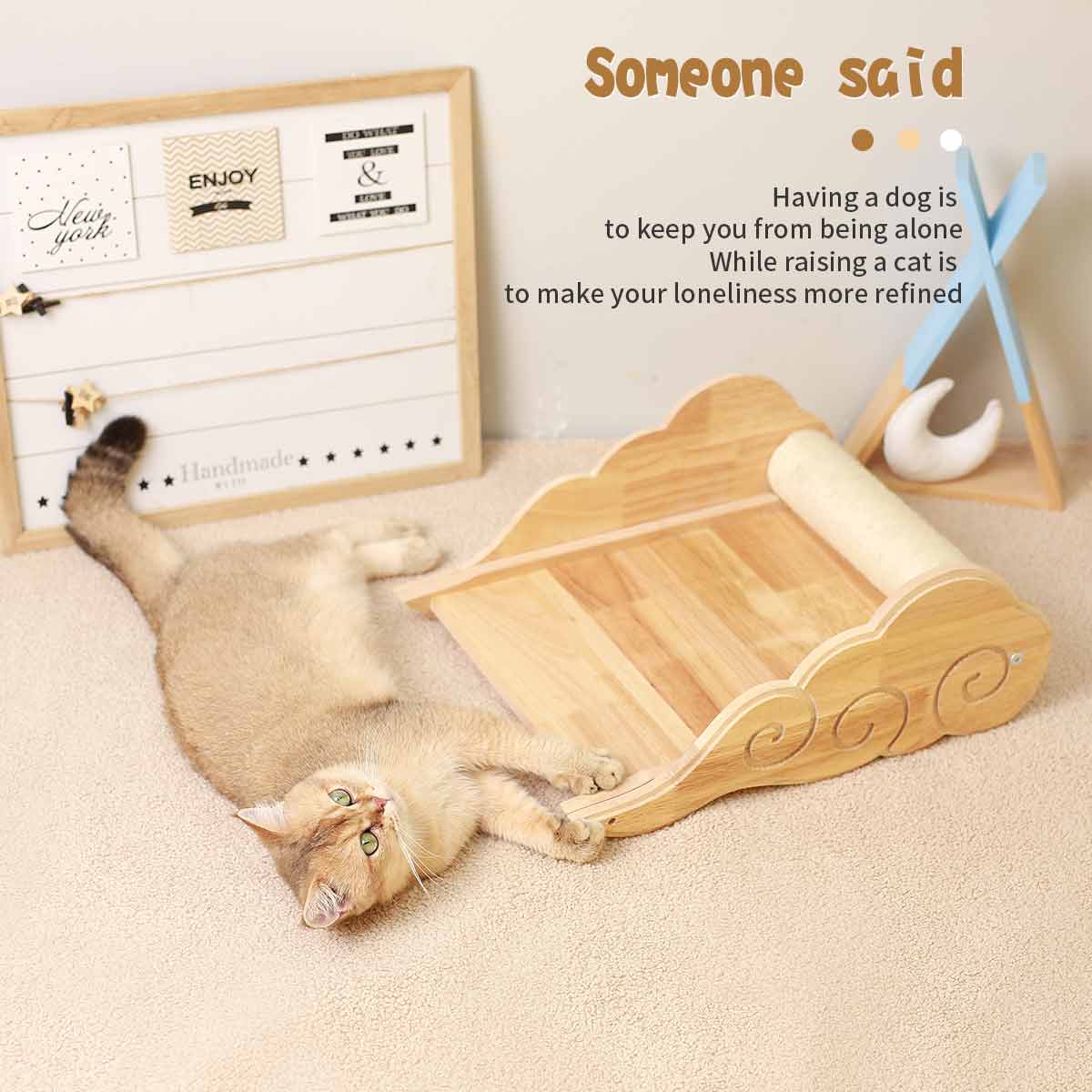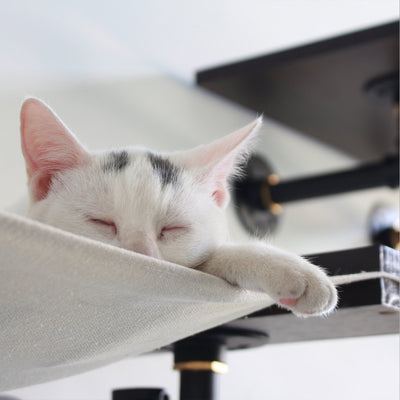Do you have burning questions like how often should I clean my dog’s bowl? Or how often should you bathe your pet? We’ve got answers.
How often should you bathe a dog?
Most dogs don’t need frequent baths unless they get into something stinky or gross. You don’t want your dog to be smelly, especially if you’re taking them out in public or into the office with you.
Monthly baths are usually fine for most dogs. But you should take into consideration your dog’s coat and lifestyle.
For instance, dogs with double coats shouldn’t be bathed too often. Bathing strips away the skin’s natural oils, which helps insulate these dogs. If your dog spends a lot of time outside or is going through a heavy shedding period, more baths might be needed.
How often can you wash a puppy?
Puppies are super cute, but they tend to be super messy too. They’re likely to get into everything. They’re often sloppy eaters. And some aren’t great at staying clean during potty training. You might be tempted to bathe your puppy a lot, but that’s not the best idea.
For one, puppies can be prone to dry skin. Washing them often can make this problem worse. It can help to use a gentle shampoo made for puppies, but spacing out baths is even better.
You can stretch out the time needed between baths by cleaning your puppy all over with a damp, soft washcloth. You can also spot clean them with some dog-safe wipes when needed.
You can follow the same rules of thumb for washing puppies as for dogs. But definitely talk to your veterinarian for bath time guidelines for your puppers.
Keep in mind you shouldn’t give really young puppies less than 7 or 8 weeks old a bath yet. They’re not fully able to regulate their body temperature, so they’ll get super chilly when they’re done.
How often should I bathe my cat?
Cats are experts at bathing themselves. They’ve got the perfect tools for it with their rough tongues and forepaws that they lick and use like washcloths.
But cats can need a bath if they get into something nasty—especially when it’s something you don’t want them to lick off and ingest. Giving your cat a bath can sound daunting. You’ll need to have some patience and plenty of treats on hand.
It’s helpful to bathe your cat when they’re in a relaxed mood. You may also want to enlist a helper who can act as a second set of hands or distract your cat as you wash away.
Go slowly and follow your cat’s lead. If it seems impossible or your cat gets too upset, consider a quick and easy washcloth “bath” instead. You don’t want your cat to end up hating you.

How often should I bathe my kitten?
Like puppies, kittens are messy little critters. They can get food and water all over their faces. They may not be overly neat when they poop in their litterbox. And they might not be great at grooming themselves yet.
Bathing your kitten can be traumatic for both of you. You probably want to avoid it if you can by wiping your kitty’s face and body with a washcloth or cat-safe wipe. Sometimes that will be enough.
If you need to bathe your kitten, it’s helpful to get them used to being in a bit of water first. One way to do this is by filling a baking tray with warm water and coaxing them to explore it with a few treats.
Once they’re comfortable with the concept of water, you can try a warm bath with just a couple of inches of water. Use a kitty-friendly shampoo, take your time, and be careful. Never submerge your kitty and have plenty of treats handy to reward good behavior.
What about pet gear and supplies?
In addition to washing your four-legged friend, you need to keep their gear and supplies clean. Otherwise, bacteria, mold, yeast, and other yucky things can crop up. These things are nasty, and they can harm your pet.
Pet Bowls
It’s easy to give your pet’s food and water bowls a quick rinse and fill them back up again. But that’s gross. And yes, I’ve done it too. But I’m trying to do better.
You should clean your pet’s bowls every day. You can toss them in the dishwasher on a sanitizing cycle or wash them by hand using soap and hot water. Be sure to wash the rubber mat under their bowls if you use one.
What type of bowls are best? Stainless steel or ceramic bowls are great choices. Avoid plastic ones since they can get scratched up, and even tiny scratches can harbor bacteria. Some pets are also allergic to plastic bowls and can end up with red, swollen lips.
Toss out their bowls if you notice any chips or cracks. Those nooks and crannies attract bacteria.
Pet Toys
Pet toys are up there on the list of germiest household items coming in at number 7. Toys get licked, chewed, and slobbered on. And they spend lots of time on the floor, which isn’t always sparkling clean. You should wash and disinfect pet toys every week or two—maybe more if they’re well-loved toys.
Lots of pet toys can go in the dishwasher for a good cleansing. Read the toy packaging to see if it’s dishwasher safe. You can also hand wash them with a dedicated scrub brush and hot, soapy water or a vinegar solution. Soft toys can usually go in the washing machine.
Remember to replace your pet’s toys when they show signs of aging or wear. Keep an eye out for ripped seams, leaked stuffing, or chewed-up rubber edges.
Pet Bedding
You should wash your pet’s bedding at least once a week. This will help keep it clean, getting rid of dirt, bacteria, and any allergens your pet might pick up on their fur. It can also help keep your pet’s coat healthier.
If your pet has sensitive skin, you can use fragrance-free detergent. You can also put the bedding through an extra rinse cycle at the end. Bedding and stuffing should be hung to dry since your dryer makes the material clump up.

Litter Boxes
Wondering how often to clean a litterbox? You might not like the answer, but they really need to be scooped out at least once a day. You should also clean them out entirely once a week.
Avoid cleaning the litterbox in the bathtub, kitchen sink, or bathroom sink if possible. You don’t want yucky stuff to get transferred to you or your food. A good old hose and bucket outside is probably the best tactic. Laundry sinks work well too.
Use a dedicated brush or sponge and wash it thoroughly. You might want to wear gloves while tackling this task.
Some cats are really sensitive to strong scents, so you may want to use fragrance-free soap. You don’t want your cat going outside of the litterbox due to an unfamiliar citrus or floral smell.
Leashes and Collars
A collar is probably the only article of clothing your pet wears (unless they’re really fancy), so be sure to wash it regularly. Collars can get kind of gross, especially if your pet spends a lot of time romping around outside. Dirty collars can cause hot spots and other skin issues.
You should wash your pet’s collar and leash once a week or so. Depending on the material, you may be able to put them in the dishwasher or washing machine.
Interested in more pet cleaning tips? Get advice on getting rid of pet odors and stains.


